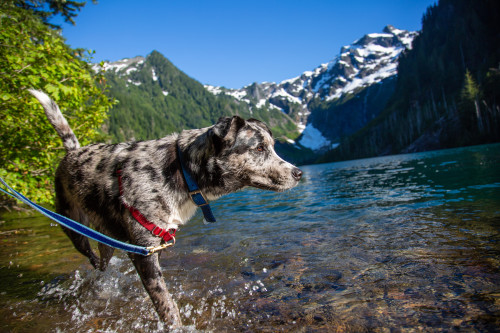Dogs in National Parks and National Forests: Pet Policies and Guidelines
Justin
June 21, 2023
National parks and national forests are cherished natural havens that attract millions of visitors every year, offering breathtaking landscapes and diverse wildlife. For pet owners and dog lovers, the question arises: Are dogs allowed in these protected areas? In this blog article, we will delve into the topic to understand the policies and guidelines concerning dogs in national parks and national forests.

Understanding the Difference:
Before we proceed, it's important to distinguish between national parks and national forests. National parks are managed by the National Park Service (NPS) and are primarily established to preserve and protect unique natural and cultural resources. National forests, on the other hand, fall under the jurisdiction of the U.S. Forest Service (USFS) and are managed for multiple uses, including recreation, timber harvesting, and conservation.
National Parks and Dogs:
Most national parks have regulations restricting dog access in order to safeguard the ecosystem and wildlife. However, it's worth noting that policies may vary from park to park. In general, the NPS prioritizes the preservation of park resources and ensures visitor safety. Here are some common guidelines regarding dogs in national parks:
Leash Requirements: In parks where dogs are permitted, they are typically required to be on a leash no longer than six feet at all times. This helps prevent disturbances to wildlife, vegetation, and other visitors.
Designated Areas: Some parks provide specific areas, such as campgrounds and paved trails, where dogs are allowed. However, access may be limited to these designated spaces to minimize impacts on sensitive habitats.
Prohibited Areas: Many national parks have restricted areas where dogs are not allowed. These include backcountry areas, trails, and certain fragile ecosystems. These restrictions are in place to protect wildlife habitats and prevent dog-wildlife interactions.
Waste Management: Dog owners are expected to pick up after their pets and properly dispose of their waste. This is crucial to maintaining cleanliness and preventing the spread of diseases.
Service Dogs: Service dogs, trained to assist individuals with disabilities, are generally allowed in national parks as long as they are under control and do not pose a threat to wildlife or other visitors.
National Forests and Dogs:
National forests have more lenient policies when it comes to dog access as most national forests do allow dogs on leash. Unlike national parks, the USFS manages these lands for various purposes, including recreational activities. While specific rules may vary, here are some common guidelines for dogs in national forests:

Leash Requirements: Dogs in national forests are often required to be under control, either on a leash or voice command. However, some forests may have designated off-leash areas where dogs can roam freely.
Dispersed Camping: National forests often allow dispersed camping, which enables dog owners to camp in undeveloped areas away from crowded campgrounds. However, certain guidelines, such as keeping dogs under control and cleaning up after them, still apply.
Trails and Recreation Areas: Many national forests permit dogs on trails and in developed recreation areas, but it is essential to verify the specific rules of the forest you plan to visit. Some trails may have restrictions due to wildlife or other safety concerns.
Hunting Regulations: National forests often have designated hunting seasons, during which dogs may be used for hunting purposes. It is important to be aware of these seasons and comply with any related regulations.
Responsible Dog Ownership:
Regardless of whether dogs are allowed in national parks or national forests, responsible dog ownership is crucial. Here are some general tips to ensure a positive experience for both you and the environment:

Research Park or Forest Policies: Before planning your trip, thoroughly research the specific regulations for the national park or national forest you intend to visit. Official websites and visitor centers are excellent sources of information.
Keep Dogs Under Control: Whether on a leash or under voice command, always ensure your dog is well-behaved and doesn't disturb wildlife or other visitors.
Respect Wildlife: It is vital to keep dogs away from wildlife, as interactions can be dangerous for both animals. Observe wildlife from a safe distance and avoid areas where they are present.
Clean up After Your Dog: Carry waste bags and promptly dispose of your dog's waste in designated trash receptacles. This helps maintain cleanliness and prevents the spread of diseases.
While the policies regarding dogs in national parks and national forests can vary, the primary focus remains the preservation of the natural environment and ensuring visitor safety. It is crucial for dog owners to familiarize themselves with the specific guidelines of each park or forest they plan to visit and to practice responsible dog ownership at all times. By doing so, we can all enjoy the beauty of these protected areas while minimizing our impact on their delicate ecosystems.